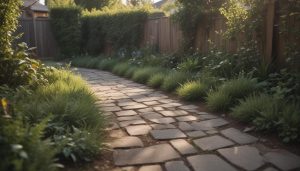Easy Vegetable Gardening Ideas You’ll Want to Try
Daniel Fisher August 22, 2025
Curious about starting a productive home vegetable garden, even with limited space? This guide unpacks accessible gardening ideas, soil tips, and seasonal planning so anyone can boost home harvests. Explore what makes successful vegetable gardening possible for every home and lifestyle.
Why Vegetable Gardening Appeals to Modern Homeowners
The growing trend toward vegetable gardening at home is fueled by the desire for fresher, healthier food and a more sustainable lifestyle. More people are realizing the benefits of cultivating their own produce, whether that’s crisp lettuce, juicy tomatoes, or aromatic herbs just steps from the kitchen. Urban dwellers and suburban families alike are finding new ways to integrate gardening, even in smaller spaces, to enjoy taste and nutrition that supermarkets can’t match. An added bonus? Home gardens serve as quiet sanctuaries from busy lives, offering mental health benefits in addition to a reliable source of vegetables for meals. The rewards of cultivating your own crops—financial savings, flavor, and peace of mind—keep gardeners of all ages returning each season for more planting inspiration.
For many, starting a vegetable garden answers common food supply concerns and environmental impact questions. Homegrown vegetables decrease the reliance on commercial farms, reducing the need for produce shipped from distant regions. This lowers your carbon footprint and allows for more control over growing practices, meaning you can opt to use organic or integrated pest management methods if preferred. The appeal extends beyond sustainability—gardening also introduces families to practical, hands-on science and nutrition education. Children get to experience the food cycle from seed to table, which can encourage better eating habits and a lifelong appreciation for plants and the natural world.
Accessibility is another core attraction. With the introduction of container gardening, raised beds, and vertical solutions, gardening is no longer limited to those with large backyards. These innovative approaches empower apartment residents and people with limited mobility to participate and succeed. As the urban gardening movement grows, community gardens and rooftop plots are popping up in areas previously considered unsuitable for cultivation. This democratization of vegetable gardening means more individuals can enjoy the benefits of fresh homegrown food.
Getting Started: Planning for Success
A successful vegetable garden starts with thoughtful planning, especially when it comes to space, sunlight, and soil conditions. Most vegetables thrive with at least six hours of sunlight a day, so choosing the right location is key. Begin by sketching out your available area—whether it’s a backyard plot, balcony, or windowsill — and note where the strongest sunlight falls during peak hours. Even partial shade areas can support certain crops, such as leafy greens or root vegetables. With a growing array of compact vegetable varieties available, it’s easier than ever to tailor a garden plan to fit any space. Planning ahead also includes considering what you’ll actually eat and cook, as growing your favorite vegetables increases the satisfaction and reduces waste. A little upfront preparation ensures that every inch of your plot delivers something you’ll truly enjoy.
Soil quality cannot be overlooked. Healthy, nutrient-rich soil forms the backbone of all productive gardens, regardless of size. Before sowing seeds or planting starts, test the soil for drainage, pH, and nutrient content. Simple at-home kits and university extension resources can make this process both accessible and affordable (https://extension.umn.edu/how-manage-soil-and-nutrients-home-gardens/soil-management-home-gardens). Enriching soil with compost or organic amendments can boost productivity and keep disease at bay. Container gardeners face different soil needs, often opting for high-quality potting mixes formulated to supply optimal moisture and structure in limited spaces. Consistent soil care pays dividends in the form of stronger, healthier plants across every growing season.
Another important planning step is understanding your local climate and growing calendar. Every region has its own frost dates and weather quirks that can make or break crops. Start by consulting resources like local extension offices or gardening centers for advice about the most reliable crops and planting times (https://garden.org/apps/calendar/). Consider succession planting to maximize yields as different crops mature throughout the season. By staggering plantings and combining fast-growing vegetables with those that take longer, it’s possible to enjoy continual harvests rather than a single glut. Smart planning leads to less disappointment and a more bountiful, diverse garden for the entire family.
Choosing Easy-to-Grow Vegetables for Beginners
Not all vegetables have the same requirements, and some are better suited to novice gardeners. Leafy greens such as lettuce, spinach, and kale are celebrated for their rapid growth and resilience. These vegetables do well in cool weather and can be harvested multiple times from successive sowings. Radishes and carrots also make reliable starting points—they germinate quickly and offer rewarding results with minimal wait. Many beginner-friendly varieties are now bred for container culture, meaning you can enjoy bountiful harvests from pots as easily as from garden beds. Leaf crops and root vegetables put resilience front and center, often bouncing back from beginner mistakes and variable weather.
Tomatoes are a perennial favorite for home gardens, and many cultivars are bred for compactness or disease resistance—features that benefit new and experienced gardeners alike. Cherry tomatoes are particularly productive in small spaces and often thrive even in large pots, provided they receive enough sunlight and regular watering. Peppers and bush beans are similarly rewarding choices, combining easy maintenance with abundant yields. Selecting varieties known for their adaptability—such as determinate tomatoes, dwarf peppers, or pole beans—can simplify your gardening journey. That, at the same time, boosts confidence as you gain practical experience. Each successful harvest serves as clear encouragement to expand into other vegetables in future seasons.
Herbs offer another entry-level gardening victory. Basil, cilantro, parsley, and chives all excel in pots on sunny windowsills or balconies, needing very little space or special attention (https://extension.psu.edu/herbs-for-the-home-gardener). Fresh herbs enliven meals while saving money, and their aromatic qualities can help deter pests from other nearby vegetables. For those truly starting from scratch, many local seed libraries and extension programs offer resources on easy-to-grow vegetables. Success breeds enthusiasm—the more approachable your choices, the more rewarding the harvest.
Making the Most of Small Spaces and Containers
Even if you don’t have a backyard, small-space vegetable gardening is well within reach. Containers, raised beds, and vertical garden systems have transformed small porches and urban patios into lush, productive oases. Choosing the right container material—plastic, wood, or fabric—can impact drainage and root temperature, while proper placement ensures plants soak up ample sunlight. Containers ranging from window boxes to hanging baskets can support root crops, trailing vines, and even small fruiting plants. Urban gardeners are often amazed at how a balcony packed with colorful pots can rival traditional ground plots in flavor and vibrancy. In cities where land is scarce, creative design using vertical supports and tiered planters helps maximize sun exposure and increase variety without sacrificing living space.
Soil and watering needs are especially important when growing vegetables in containers. Container soil mixes are engineered to foster moisture retention and aeration, which are essential for strong roots. Frequent but moderate watering helps avoid fluctuations that can harm tender seedlings. Self-watering planters and drip irrigation systems reduce daily chores while ensuring consistent hydration, particularly for busy gardeners or those traveling frequently. Mulching pots with straw or compost not only conserves moisture but also deters weed growth, keeping maintenance low and yields high. Success hinges on matching the container size to the crop’s root system—overcrowding can stunt growth and lead to disappointing results.
Vertical gardening further expands opportunities in tight quarters. Trellises, wall planters, stacked pots, and even repurposed shelving are fantastic tools for bringing vining vegetables like pole beans, cucumbers, or peas to eye level. Not only does vertical gardening increase available space, but it can also improve air circulation and keep plants healthier. These systems encourage creativity and provide solutions for achieving seasonal harvests where it once seemed impossible. With patience and a dash of ingenuity, nearly any indoor or outdoor space can become a productive vegetable patch, yielding food, beauty, and satisfaction in equal measure.
Sustaining and Troubleshooting Your Garden Throughout the Season
Once plants are in the ground or pots, regular care is the secret to maximizing healthy harvests. Routine watering, mulching, and monitoring for weeds keep plants focused on growing rather than competing for resources. Gardeners should also keep an eye out for early signs of nutrient deficiencies, such as yellowing leaves or stunted growth; these are often simple to address with controlled fertilization or organic amendments. Keeping a garden journal—recording planting dates, weather conditions, and outcomes—can help future planning and boost results. Even seasoned gardeners face unexpected challenges due to shifting weather or insect pests—observation and adaptability are key.
Pest management is crucial, but chemical reliance is increasingly giving way to integrated pest management and natural deterrents. Hand-picking insects, encouraging beneficial predators, or using protective row covers all help minimize damage without resorting to harsh pesticides (https://ipm.ucanr.edu/). Companion planting offers additional protection, utilizing aromatic herbs or flowers like marigolds to repel or confuse pests. Addressing disease often comes down to prevention: rotating crops annually and maintaining good airflow reduces the spread of fungal and bacterial infections. Healthy, attentive gardening habits not only improve yields but also foster ecological balance and a healthier home environment.
Many gardeners encounter setbacks ranging from slow sprouting to wilting during heatwaves. Learning to troubleshoot by assessing light, water, and soil needs usually solves most issues. Community gardening groups, local extension offices, and online forums provide problem-solving support and personalized tips based on common local difficulties (https://www.canr.msu.edu/home_gardening/). With patience and curiosity, each challenge becomes a lesson, ensuring your gardening skills—and your harvests—grow stronger over time. The habit of celebrating small successes and learning from mistakes lies at the heart of a rewarding gardening adventure.
Extending the Season and Planning for Year-Round Harvests
Vegetable gardening doesn’t have to end when summer fades. With row covers, cold frames, or small greenhouses, it’s possible to extend the season and enjoy fresh greens and root crops well into fall and even winter in many climates (https://www.growveg.com/guides/10-ways-to-extend-your-growing-season/). Choosing varieties bred for cold tolerance, such as kale, spinach, or Asian greens, allows gardeners to maintain productivity long after others have packed up their tools. For those living in especially harsh climates, indoor growing racks fitted with supplemental lights can keep tender herbs and leafy greens coming no matter the weather outside.
Planning for offseason harvests involves timing plantings before the last warmth of summer fades and providing simple protection against frost. Many root crops, including carrots and beets, store exceptionally well in the ground once matured, and harvesting as needed ensures maximum flavor and nutrition. Preserving surplus through canning, freezing, or dehydrating extends the benefits of your summer work, providing pantry staples and culinary inspiration throughout the colder months. Garden journals and sketches make it easier to remember planting dates and which protection techniques worked best, simplifying next year’s efforts.
Year-round gardening is as much about strategy as it is about hard work. By understanding seasonal transitions and experimenting with new crops and infrastructure, gardeners discover fresh joy and plentiful rewards every month. The result is a home landscape that not only supplies nutritious food but also cultivates curiosity, resilience, and a deeper connection to the cycles of nature. Home vegetable gardening, with its mix of tradition and innovation, promises adventure and abundance for anyone willing to nurture their patch of earth.
References
1. University of Minnesota Extension. (2023). Soil management for home gardens. Retrieved from https://extension.umn.edu/how-manage-soil-and-nutrients-home-gardens/soil-management-home-gardens
2. National Gardening Association. (2023). Planting calendars. Retrieved from https://garden.org/apps/calendar/
3. Penn State Extension. (2022). Herbs for the home gardener. Retrieved from https://extension.psu.edu/herbs-for-the-home-gardener
4. University of Minnesota Extension. (2023). Growing vegetables. Retrieved from https://extension.umn.edu/planting-and-growing-guides/growing-vegetables
5. University of California IPM. (2023). Integrated pest management for home gardens. Retrieved from https://ipm.ucanr.edu/
6. Michigan State University Extension. (2022). Home gardening resources. Retrieved from https://www.canr.msu.edu/home_gardening/







